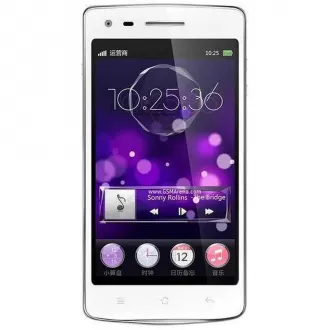Oppo U701 Ulike USB Drivers will help your Windows computer recognize your Android device. Then you can transfer files from computer to Android or even install the stock or custom ROM to your Android device.
OS: Android OS, v2.3 (Gingerbread)
Chipset: Mediatek MT6575
CPU: 1.0 GHz Cortex-A9
GPU: PowerVR SGX531
Display
Type: IPS LCD capacitive touchscreen, 16M colors
Size: 4.0 inches (~57.9% screen-to-body ratio)
Resolution: 480 x 800 pixels (~233 ppi pixel density)
Multitouch:
Battery
Stand-by: Up to 400 h (2G) / Up to 400 h (3G)
Talk time: Up to 9 h 20 min (2G) / Up to 7 h (3G)
Battery: Li-Ion 1710 mAh battery
Camera
Primary: 5 MP, autofocus, LED flash
Features: Geo-tagging, touch focus, face detection
Video: Yes
Secondary: 2 MP
Memory
Card slot: microSD, up to 32 GB (dedicated slot)
Internal: 4 GB, 512 MB RAM
Phonebook:
Call records:
Network
Technology: GSM / HSPA
2G:
2G Bands: GSM 850 / 900 / 1800 / 1900
3G:
3G Bands: HSDPA 2100
Speed: HSPA
GPRS:
EDGE:
4G:
Comms
WLAN: Wi-Fi 802.11 b/g/n, hotspot
Bluetooth: Yes
GPS: Yes, with A-GPS
Radio: No
USB: microUSB v2.0
NFC:
Infrared port:
Body
Dimensions: 123 x 64 x 9.7 mm (4.84 x 2.52 x 0.38 in)
Weight: 130 g (4.59 oz)
SIM: Yes
Features
Sensors: Accelerometer, proximity, compass
Messaging: SMS (threaded view), MMS, Email, Push Email
Browser: HTML5
Java:
Games:
Features: MP4/H.264/WMV player | MP3/eAAC+/WMA/WAV player | Document viewer | Photo viewer/editor
Clock:
Alarm:
Misc
Colors: White
Price group: 2/10 (About 80 EUR)
Sound
Alert types: Vibration; MP3, WAV ringtones
Loudspeaker:
3.5mm jack:
Launch
Announced: 2012, June
Status: Available. Released 2012, June
Step 1 — Download and extract the Android USB Driver to your PC.
Step 2 — Click Start (Windows) -> Control Panel -> Device Manager (Select Device Manager).
Step 3 — On the Device Manager window find and click on computer name to select Add legacy hardware.
Step 4 — Select Next
Step 5 — Selext Install the hardware that I manually select from a list (Advanced), and click the Next
Step 6 — Select Show All Devices afterward click Next button again.
Step 7 — Click the Have Disk button.
Step 8 — Click Browse button to find the extracted Android ADB Driver -> android_winusb.inf and click on Open.
Step 9 — Click OK.
Step 10 — Now select the Android ADB Interface -> click Next button.
Step 11 — Click Next button again.
Step 12 — Windows Security box will appear, to confirm whether you really want to install the Android USB Driver, so just choose the Install this driver software anyway.
Step 13 — Once you clicked the Finish button, then repeat from step 2 to choose Android Composite ADB Interface.
Step 14 - Done.
